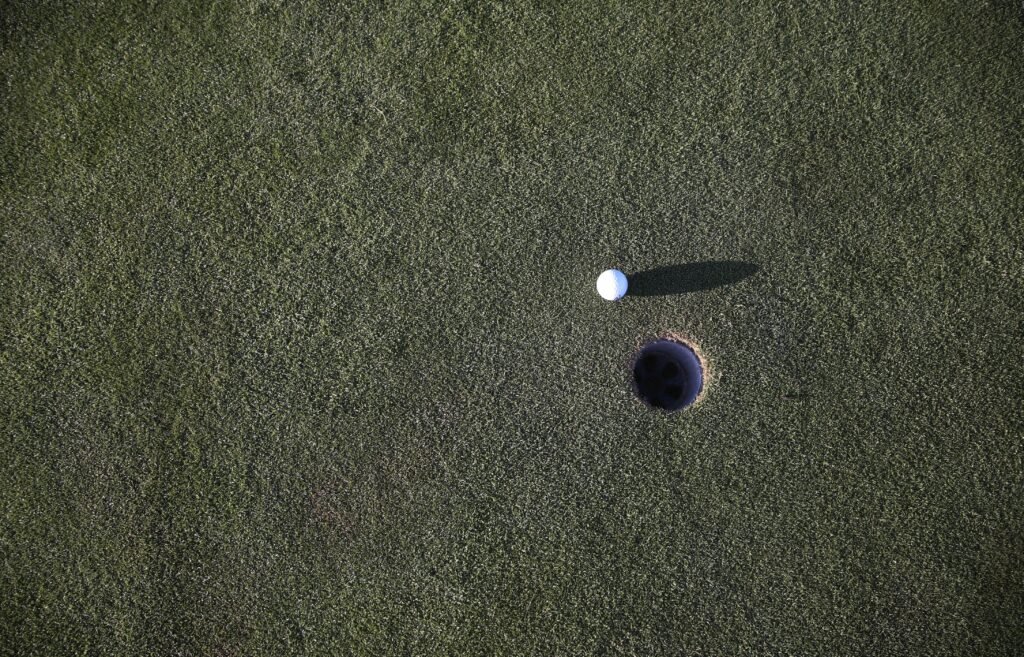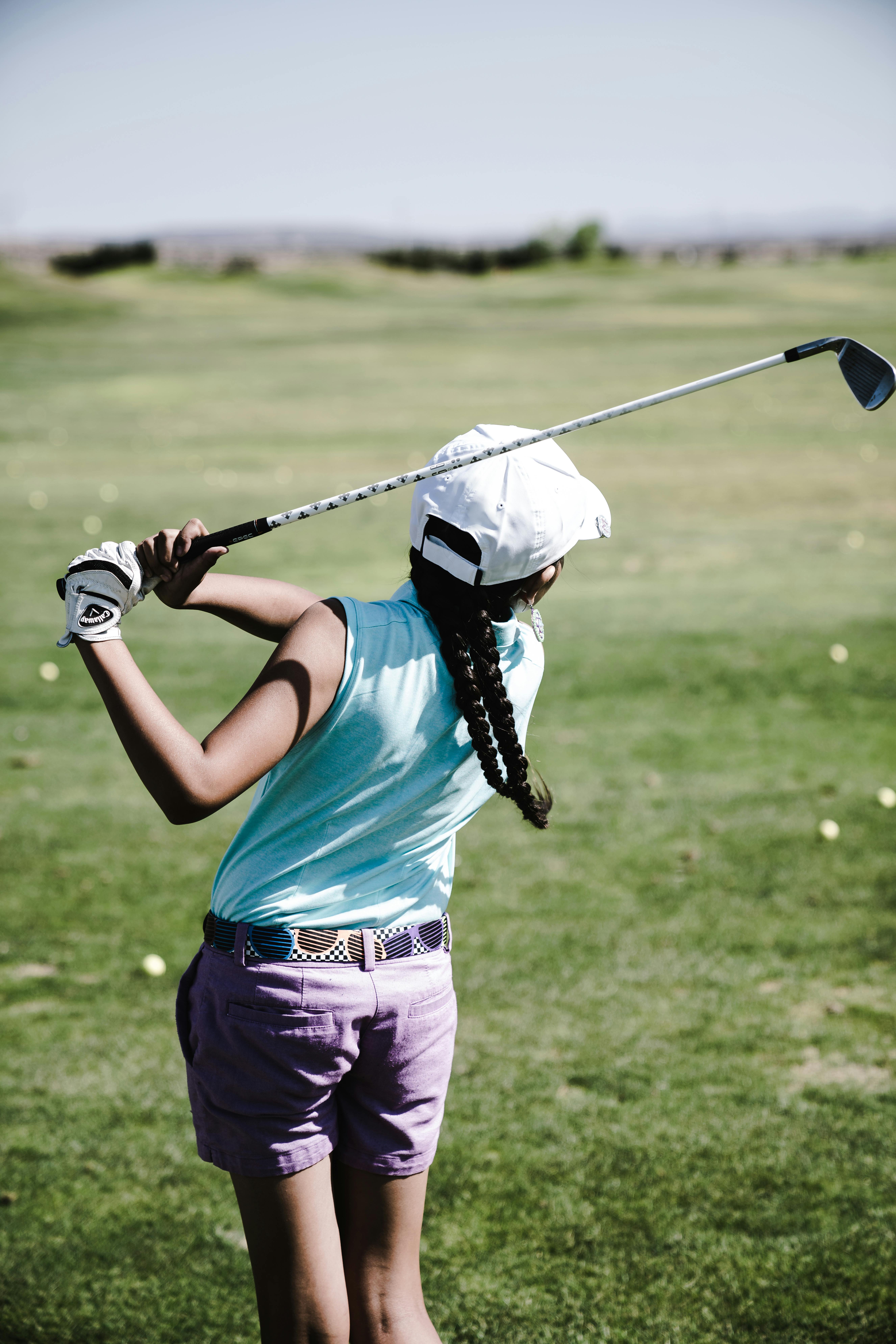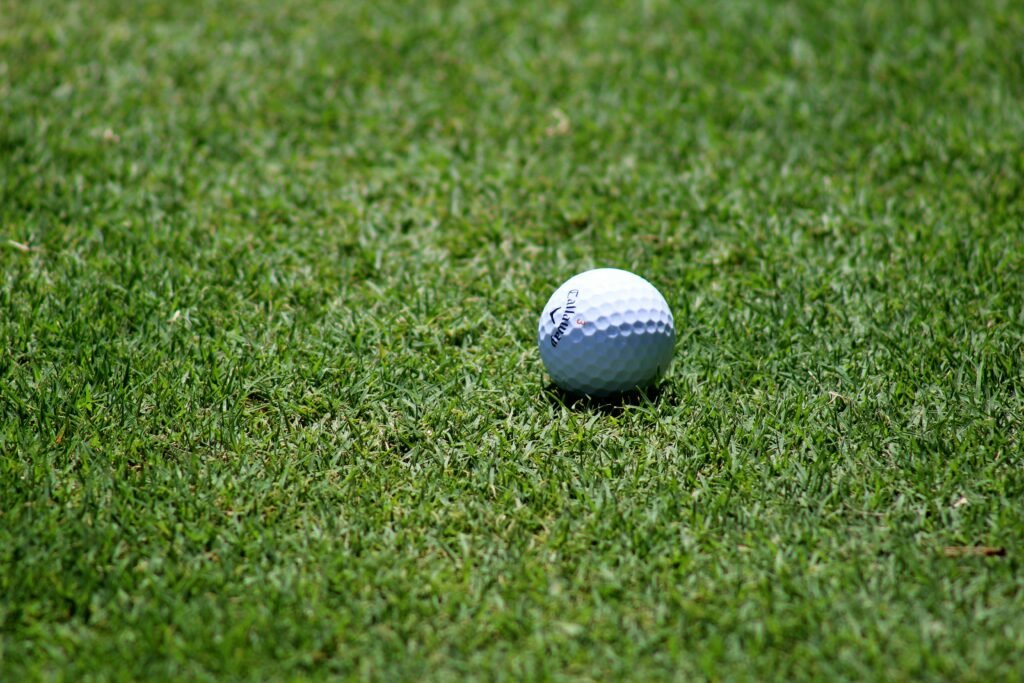
If you’ve ever found yourself on a golf course, you may have noticed a unique code of conduct that players adhere to. But what exactly is golf etiquette? In a nutshell, it’s the set of unwritten rules and customs that govern the behavior and conduct of golfers on the course. From keeping quiet during someone’s swing to fixing divots on the green, golf etiquette is all about respect, sportsmanship, and maintaining the integrity of the game. So, whether you’re an experienced golfer looking for a refresher or a beginner eager to learn the ropes, understanding and practicing golf etiquette is essential for a smooth and enjoyable round of golf.
Definition of Golf Etiquette
The concept of etiquette in golf
Golf etiquette refers to a set of unwritten rules and behaviors that govern the conduct and behavior of golfers on the course. It encompasses various aspects of the game, such as respecting other players, adhering to dress codes, maintaining course etiquette, prioritizing safety, exhibiting sportsmanship, and handling golf equipment properly. Golf etiquette not only contributes to a smooth and enjoyable game for all players but also upholds the integrity and traditions of the sport.
Why golf etiquette is important
Golf etiquette is of paramount importance as it creates a harmonious and respectful environment on the course, allowing players to fully enjoy the game. By following proper etiquette, golfers demonstrate consideration for others, maintain the condition of the course, and prioritize safety. Furthermore, adhering to these guidelines showcases good sportsmanship, fosters a positive atmosphere, and upholds the integrity of the game. Golf etiquette is not only about following rules but also about showing respect for the game, fellow players, and the golf course itself.
General Behavior on the Golf Course
Respecting other players
Respecting other players is a fundamental aspect of golf etiquette. Remember that you are sharing the course with other golfers who deserve to have an enjoyable experience as well. Be mindful of their personal space and avoid unnecessary distractions during their swings. Wait for your turn patiently and avoid any disruptive or aggressive behavior. By showing respect towards other players, you contribute to a positive and friendly atmosphere on the course.
Being quiet and still during swings
When a fellow golfer is preparing and executing their swing, it is essential to maintain silence and stillness. Loud conversations, sudden movements, or any unnecessary noise can disrupt their concentration and affect their shot. By staying quiet and still, you demonstrate courtesy and respect for your fellow players and allow them to focus on their game. Remember, every player deserves a fair chance to perform to the best of their ability.
Repairing divots and ball marks
Part of being a considerate golfer involves taking responsibility for the care and maintenance of the course. After taking a shot, promptly repair any divots caused by your club or footsteps. Similarly, on the putting green, repair ball marks left by your ball as well as any others you may notice. Properly fixing these imperfections helps to preserve the quality of the playing surface for all golfers. By actively participating in the course maintenance, you contribute to creating a pleasant experience for everyone.
Avoiding slow play
Maintaining a good pace of play is crucial in golf, and being aware of your speed on the course is an essential part of etiquette. As a golfer, it is important to keep up with the group in front of you, without excessively delaying players behind. Plan your shots in advance, be prepared when it’s your turn, and avoid unnecessary delays such as searching for lost balls for an extended period. By prioritizing pace, you ensure that everyone on the course has a smooth and enjoyable round of golf.

Dress Code
Appropriate golf attire
Dressing appropriately for the golf course is not only a matter of etiquette but also shows respect for the traditions of the game. Most golf clubs have a dress code in place, and it is essential to adhere to it. Generally, collared shirts or golf-specific shirts are required, while t-shirts and tank tops are typically not allowed. Shorts or pants should be neat and in good condition, avoiding overly casual or revealing clothing. Presenting yourself in proper attire contributes to the overall professional and respectful atmosphere of the golf course.
Guidelines for footwear
Proper footwear plays a significant role in both comfort and maintaining the condition of the course. Golf shoes with soft spikes or spikeless shoes are commonly recommended, as they provide stability and minimize damage to the turf. Metal spikes, on the other hand, are typically prohibited due to their potential to cause excessive wear and tear on the greens. By wearing appropriate golf shoes, you ensure that you can navigate the course safely while also preserving its quality for others to enjoy.
Wearing caps and hats
Wearing a cap or hat on the golf course can serve multiple purposes, such as protecting you from the sun or managing hair during gameplay. However, it is important to be mindful of golf course-specific rules regarding headwear. Many golf clubs require caps or hats to be worn in the correct manner, such as with the bill facing forward. Additionally, it is courteous to remove your headwear when entering the clubhouse or engaging in certain formal settings. By following these guidelines, you exhibit respect for the established norms and expectations within the golfing community.
Golf Course Courtesy
Allowing faster players to play through
Maintaining a good pace of play is crucial to a smooth round of golf, and sometimes you may find yourself playing slower than others. In such situations, it is courteous to allow faster players, such as those playing behind you, to play through. Pay attention to your surroundings and be aware of groups waiting to proceed. By stepping aside and allowing faster players to move ahead, you not only adhere to golf etiquette but also demonstrate consideration for others and help prevent frustration on the course.
Walking or riding in the designated areas
When moving around the course, it is important to follow the designated paths or cart tracks. Avoid driving carts or walking in areas where it may cause damage, such as the teeing grounds, greens, or sensitive areas marked by ropes or signs. By respecting these boundaries, you preserve the condition of the course and ensure its longevity for all golfers. Additionally, be mindful of fellow players’ personal space and avoid unnecessary distractions when walking or riding alongside them.
Avoiding unnecessary damage to the course
Taking care of the golf course is a collective responsibility that falls on all golfers. To maintain the quality of the course, it is crucial to avoid any actions that may cause unnecessary damage. This includes refraining from hitting unnecessary shots or practicing on the course, driving carts too close to greens, or walking on areas where it may leave noticeable footprints or divots. By treating the course with care and consideration, you contribute to its overall aesthetics and playability.

Safety Considerations
Awareness of other players’ positions
Safety should always be a top priority when playing golf. It is essential to be aware of the positions of other players on the course and take necessary precautions to avoid potential accidents or injuries. Before hitting a shot, look around and ensure that no one is within your range. Be cautious of fellow golfers who may be in your line of play or walking nearby. By maintaining awareness and using common sense, you contribute to a safe playing environment for all.
Preventing dangerous situations
While accidents on the golf course are rare, it is important to take preventive measures to minimize the risk of harm. Avoid hitting shots when other golfers are directly in front of you, and never hit if there is a chance that your ball might strike someone or their property. When driving a golf cart, exercise caution and adhere to the posted speed limits and safety instructions provided by the course. By prioritizing safety, you help ensure that everyone can enjoy the game without unnecessary risks.
Avoiding distractions
Maintaining focus and concentration is essential when playing golf, and it is important to avoid causing distractions for yourself and others. Refrain from unnecessary talking, loud noises, or sudden movements that may disrupt fellow players’ concentration. Additionally, avoid using electronic devices, such as mobile phones, that may divert your attention from the game. By minimizing distractions, you create a conducive environment for a more enjoyable and successful round of golf.
Sportsmanship and Honesty
Respecting the rules of the game
Sportsmanship is a fundamental aspect of golf etiquette and involves adhering to the rules and regulations of the game. Familiarize yourself with the basic rules and guidelines of golf and ensure that you play within the established framework. Avoid taking unfair advantages, such as improving the position of your ball or not counting penalty strokes accurately. Honesty and integrity are highly valued in golf, and by playing by the rules, you exhibit good sportsmanship and contribute to the overall integrity of the game.
Maintaining a positive attitude
Golf can be a challenging and frustrating game at times, but maintaining a positive attitude is crucial. Regardless of your performance, it is important to remain courteous and respectful towards your fellow players. Avoid displaying anger, throwing clubs, or using offensive language. Instead, focus on enjoying the game and appreciating the opportunity to spend time on the golf course. By exhibiting a positive attitude, you contribute to a welcoming and supportive atmosphere for all golfers.
Accepting good shots and bad shots with grace
In golf, there are moments of success and moments of disappointment. How you react to both good shots and bad shots reflects your sportsmanship and maturity as a golfer. When you hit a great shot, graciously acknowledge it without boasting or gloating. Conversely, when faced with a poor shot, accept it with composure and refrain from venting frustration. Displaying grace in both victory and defeat showcases your respect for the game and your fellow players.

Etiquette for Golf Equipment
Proper care and handling of clubs
Golf clubs are valuable tools that require proper care and handling. Avoid throwing or dropping clubs and treat them with respect. After each shot, make sure to clean your clubs of any dirt or grass that may affect their performance. It is also important to store your clubs appropriately, keeping them in a suitable bag or rack to avoid damage. By taking care of your clubs, you prolong their lifespan and maintain their optimal condition for better gameplay.
Keeping equipment organized
Organizing your golf equipment is not only a matter of convenience but also reflects good etiquette. Keep your golf bag tidy and well-organized, with clubs arranged in a logical manner for quick and easy access. This ensures efficient play and prevents unnecessary delays as you search for the right club. Additionally, it is polite to return any borrowed or shared equipment to its rightful place after use. By maintaining an organized equipment setup, you contribute to a smooth and enjoyable round for everyone involved.
Avoiding damage to the course with equipment
While on the course, it is important to handle your golf equipment in a manner that avoids damage to the turf and surroundings. Avoid dragging or scraping your clubs across the ground, as this can leave unsightly marks or divots on the fairway or tee box. Exercise caution when placing your bag on the course, ensuring that it does not obstruct or damage any sensitive areas. By being mindful of your equipment’s impact on the course, you help preserve its aesthetics and playability.
On-Course Communication
When and how to talk to fellow players
Communication on the golf course should be handled appropriately to avoid disrupting other players. While casual conversations are not prohibited, it is important to choose the timing and volume carefully. Avoid talking or making excessive noise during another player’s swing or when others are in close proximity. If you need to communicate important information or engage in conversation, wait until it is your turn to play or find a suitable moment during a break in play. By practicing considerate communication, you ensure that the focus and concentration of fellow players remain undisturbed.
Use of mobile phones
The use of mobile phones on the golf course should be limited to necessary and urgent situations. Golf is a game that requires focus and concentration, and constant phone usage can be disruptive to both yourself and fellow players. Ensure that your phone is set to silent or vibrate mode and refrain from engaging in phone conversations during gameplay. Be considerate and use your phone sparingly, prioritizing the enjoyment and integrity of the golfing experience.
Non-verbal signals and gestures
Non-verbal communication can be useful on the golf course, especially when distance or noise levels make verbal communication challenging. Simple hand signals or gestures can effectively convey messages to fellow players. For example, raising your hand to signal that you found your ball or waving to indicate that it is safe to proceed. However, it is important to avoid exaggerated or distracting gestures that may disrupt other players. By utilizing clear and concise non-verbal signals, you facilitate smooth and efficient communication on the course.

Tee Box and Fairway Etiquette
Respecting tee box order
The tee box is the starting point for each hole, and proper etiquette requires players to follow a specific order when teeing off. Usually, the player with the honor, having achieved the lowest score on the previous hole, tees off first, followed by the other players in their respective order. It is important to maintain this order to ensure fairness and efficiency in the game. Additionally, avoid standing too close to the player who is addressing the ball to avoid any distractions or interference.
Maintaining pace of play on the fairway
The fairway is a key area where pace of play is crucial. After teeing off, players should proceed to their balls promptly, taking the most direct route between shots. Waiting for other players further down the fairway to complete their shots is essential to maintain the flow of play. Once it is your turn to hit, make your shot without undue delay, allowing those behind you to proceed without unnecessary wait times. By staying aware of the pace of play and being considerate to others, you help create a smooth and enjoyable round of golf.
Avoiding unnecessary damage to the fairway
When on the fairway, be mindful of your actions to ensure that you do not cause unnecessary damage. Avoid taking practice swings that damage the turf or repeatedly striking the ground with your club. Similarly, avoid driving carts or pushing golf trolleys too close to the fairway edges, as this can create tracks or cause divots. By maintaining awareness and being conscious of your impact on the course, you contribute to the overall aesthetics and playability of the fairway for all golfers.
Etiquette on the Putting Green
Repairing ball marks
The putting green is a delicate area that requires special attention and care. When your ball lands on the green, it may leave a mark or indentation in the turf. It is crucial to repair these ball marks promptly using a ball mark repair tool or tee, gently pushing the turf back into place without lifting or tearing it. Repairing ball marks restores the smoothness and quality of the green for yourself and other players. Additionally, if you notice any unrepaired ball marks, it is considerate to fix them as well.
Avoiding stepping on others’ putting lines
Putting lines are the paths that golfers take to reach the hole on the green. It is important to avoid stepping on these lines, as they can affect the direction and speed of the putt. When walking on the green, either go around another player’s line or step lightly to minimize any potential damage. By being mindful of others’ putting lines and respecting their area of play, you demonstrate proper etiquette and maintain the integrity of the green surface.
Being aware of others’ movements on the green
It is crucial to be aware of other players’ movements on the green to avoid causing distractions or disruptions. Avoid walking across their line of play or casting a shadow that may affect their putting. Be mindful of your position and maintain a respectful distance from other golfers when it is their turn to putt. Additionally, avoid unnecessary noise or sudden movements that may break their concentration. By being considerate and aware of others’ movements, you contribute to a positive and cohesive putting experience for everyone.
